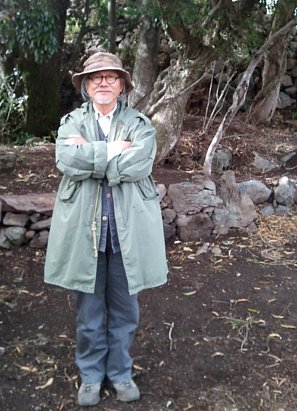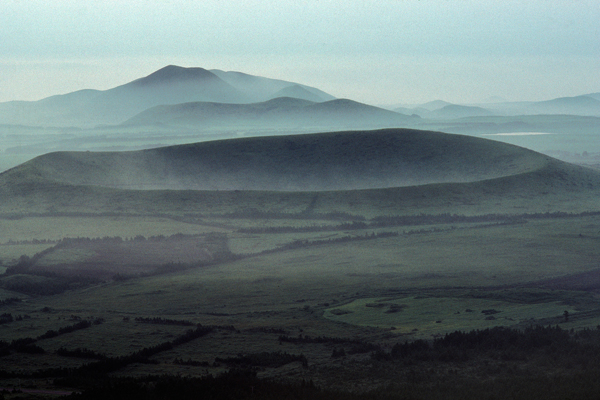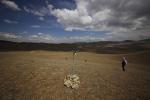|
| |
 |
|
| ▲ The newly-built Jeju Stone Park guesthouses will open at the end of May. Photo by Anne Hilty |
An entire “folk village” of 49 houses has been built in Jeju Stone Park. And you can stay there.
The houses in this new village are made in the traditional way, with thatched roofs, paper-covered windows, and stone walls. Designed in various styles, some of them have the front thatched wall that lowers over the windows and doors in case of storm.
In the center of the village is a majestic 300-year-old tree that was privately donated and moved there from another location. And on the margin, overseen by two of Jeju's oreum (volcanic cones), there is a pre-existing shamanic shrine under a spirit tree.
No Jeju village would be complete without such a natural shrine to the gods.
| |
 |
|
| ▲ Paek Unchol. Photo by Anne Hilty |
A joint project between the government and Stone Park management team, this village has not yet been viewed by anyone outside of the staff involved in its creation. Not, that is, until this writer and two visiting friends from Seoul happened upon the park's manager, Paek Unchol.
Walking through the stunningly beautiful park, considering it as a possible venue for a future event, we came upon Paek as he was out in the woods, clippers in hand and long white hair flowing down his back, trimming 'his' trees. Acquainted with one member of our group, Paek cheerfully invited us on a private tour of the new village.
That the park is “his” in the sense of kinship or sacred relationship is without question. His love for every stone, tree and bird is evident in his expression. This is his natural home.
Located in Gyorae-ri, Jocheon-eup, the park is a 20-minute drive southeast of Jeju City. The details of the new village are not yet certain, as they are still being worked out between the government officials and park management.
It will be available for short-term rental – for a night, a weekend, a week – and will open at the end of this month. At that time, a press conference is likely to be held and details will be published on the park's Web site (www.jejustonepark.com).
As the flora of this village grow to cover the soil now exposed by construction, so will the village itself take shape and become an organic, living thing.
The surrounding park is absolutely mystical. It is a very large property which has many sections of Jeju stone turned into works of art, and those created in the traditional manner and relocated here from other sites.
Fifteen buildings house small educational displays, there's a small museum with restaurant and a gallery with a performance hall, and in the latter, a second gallery consists entirely of tree roots in artistic configurations.
| |
 |
|
| ▲ Photo by Anne Hilty |
The spirits dance in this park. It is expansive and entirely in harmony with nature.
And at the center of it all, the pivot stone around which the park thrives, is the magical Paek Unchol.
On May 15 a festival will take place at the park in honor of the mythical creator of Jeju Island, Seolmundae Halmang, grandmother of all.
Beginning at 10 a.m., the festival will include a shamanic ritual performed by the “simbang” of the Chilmeoridang organization, festival activities, and a scholarly seminar held at 2 p.m.
And at the end of this month: the lovely traditional “guesthouse” village will open to all.
Dr. Hilty is a cultural health psychologist. |






















